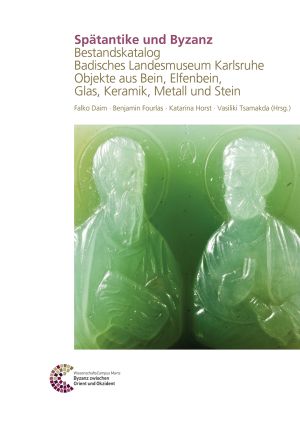Tsamakda, Vasiliki
Schiffe und ihr Kontext: Darstellungen, Modelle, Bestandteile – von der Bronzezeit bis zum Ende des Byzantinischen Reiches
Seafaring was extraordinary important in Antiquity and the Middle Ages for the economy and the wielding of power. It also provided contact between distant places. Ships were on the one hand decorated and ornamented and on the other hand they were frequently objects of depictions which could range from sketchy graffiti to three-dimensional reproductions. The contexts of the depictions encompass different areas, such as public and private representation as well as religion.
This Volume assembles 18 articles that have been presented on the occasion of an international workshop in 2013. Different groups of material ranging from the period of Bronze Age until the end of the Byzantine Empire were presented as well as the development of ship-building and navigation. The depictions of ships which have investigated scanty until now were the main target of the workshop.
Spätantike und Byzanz. Bestandskatalog Badisches Landesmuseum Karlsruhe: Objekte aus Bein, Elfenbein, Glas, Keramik, Metall und Stein
The collection of the Badisches Landesmuseum Karlsruhe contains an extensive inventory of Late Antique and Byzantine objects, previously only partially accessible in publications. The artefacts and artworks are mainly small-scale objects, some of great scholarly value. They belong to both the sacral and secular spheres and convey a wide spectrum of everyday life as well as artistic and cultural production in the late Roman and Byzantine Empire. In the collection catalogue, the 268 objects made of bone, ivory, glass, ceramics, metal and stone, some bearing inscriptions, are thoroughly documented, interpreted and categorized in terms of their cultural history.
Der Doppeladler: Byzanz und die Seldschuken in Anatolien vom späten 11. bis zum 13. Jahrhundert
The Rum Seljuk Empire had emerged after the devastating Battle of Manzikert in 1071 in the previously Byzantine Anatolia. Until its dissolution in early 14th century it was the Byzantines’ most important neighbor on their Eastern border. The Rum Seljuk Empire combined Seljuk and Greek-Orthodox populations. Thus it was in close contact with Byzantium: Especially trade, the exchange of artists and marriages defined these relations. These social and political links as well as the ethnic and religious tolerance that shaped the coexistence of different groups in the Rum Seljuk Empire built the foundation for great art. At the same time we only know little about the Rum Seljuks and their interaction with the Byzantines so that the impression, that there had not been any cultural exchange between them, still prevails.
This conference volume presents the results of an interdisciplinary congress that took place October 1.-3, 2010 in the Römisch-Germanisches Zentralmuseum Mainz. The congress intended to discard this impression and initiate a discussion about problems concerning the Byzantine-Seljuk relations.










